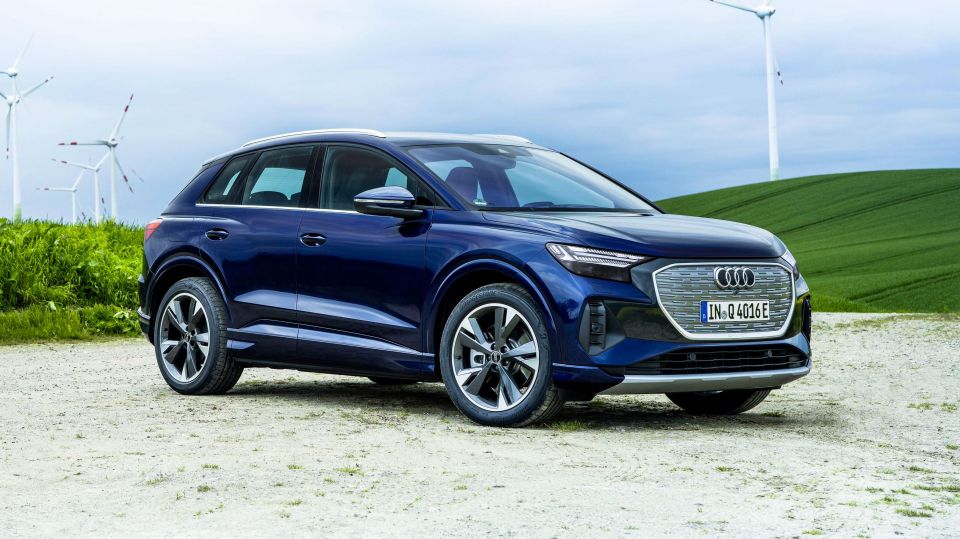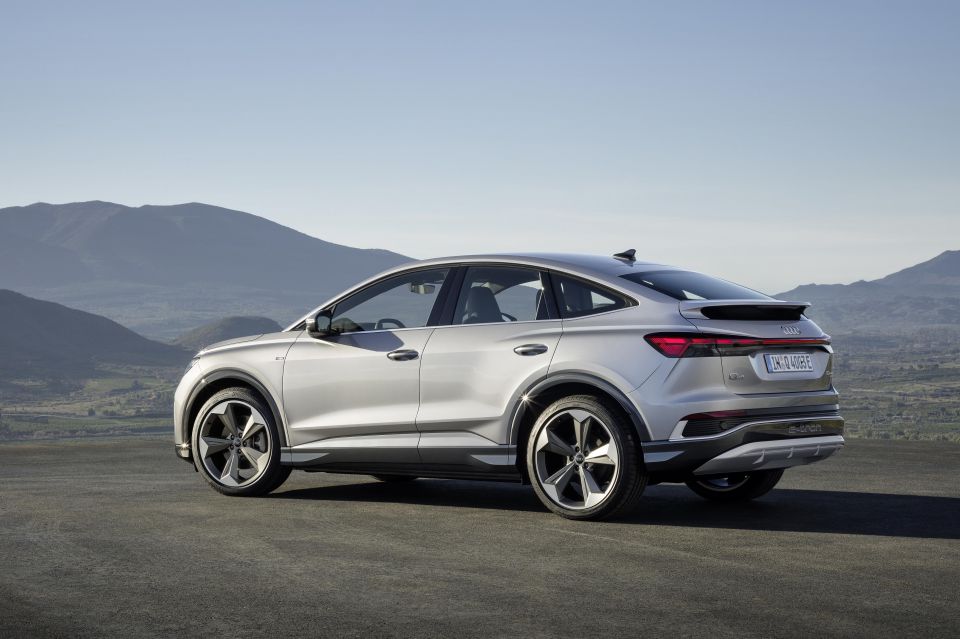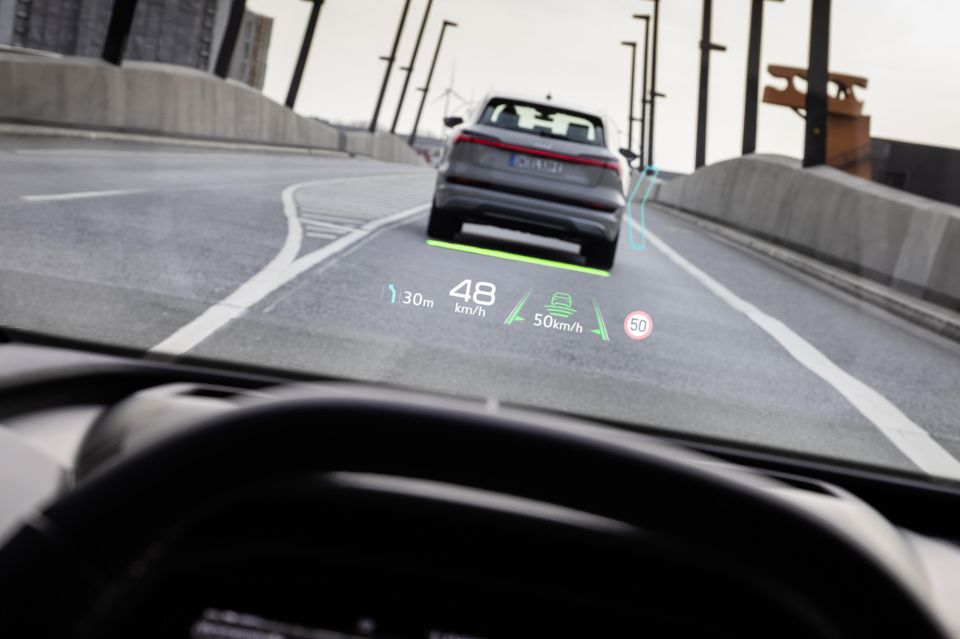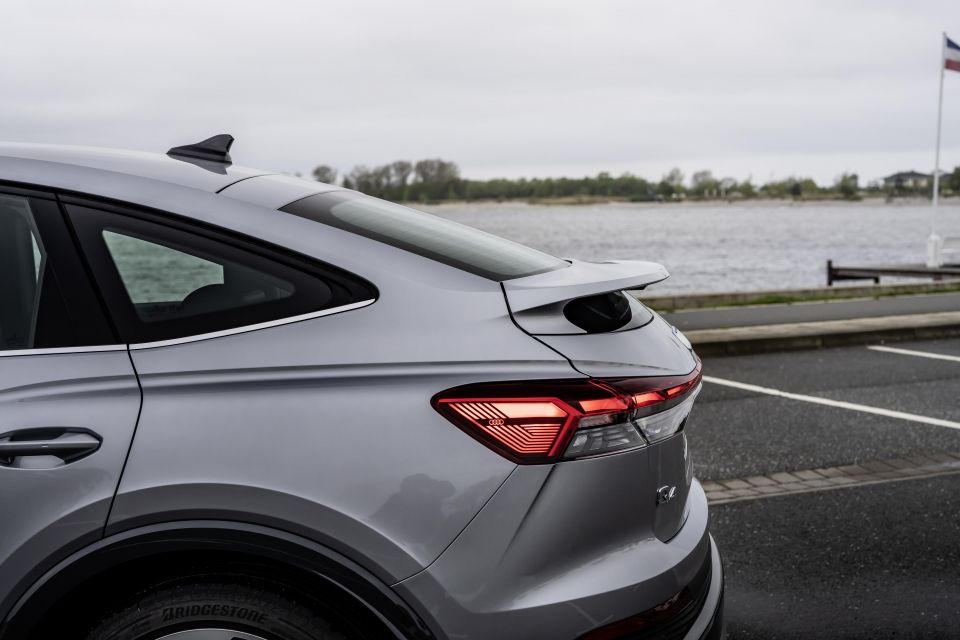

James Wong
2026 Nissan Ariya review
3 Days Ago
The Q4 e-tron will appeal to loyal Audi owners looking to go electric, but there's enough charm here to appeal to others, too.



News Editor

News Editor


News Editor

News Editor
Where expert car reviews meet expert car buying – CarExpert gives you trusted advice, personalised service and real savings on your next new car.
The Audi Q4 e-tron was launched in 2021 and is a fresh, yet distinctly Audi take on a small electric SUV.
But will it still feel so fresh in 2024? Audi Australia says we may be waiting until then for a local launch, blaming our market’s current lack of emissions standards for new vehicles for pushing us down the priority list for global headquarters. The local arm would like to get the car here sooner, but can offer no guarantee.
That means by the time the Q4 e-tron finally arrives here, Audi will have been beaten to the punch in offering a small electric SUV by BMW, Lexus, Mercedes-Benz and Volvo. Not only that, the Q4 e-tron won’t even be the first vehicle in Australia on the dedicated electric MEB architecture, with the Cupra Born and Volkswagen ID.4 and ID.5 all set for 2023 launches Down Under.
2024 is over 12 months away, and a lot can change in that time. But as it stands, has Audi found a winning formula for its most affordable electric vehicle?

Pricing has yet to be confirmed for the Australian market, but in the UK the Q4 e-tron range opens at £49,215 (A$88,934) for the 40 wagon – the base 35 no longer appears on Audi’s configurator there – and tops out at £63,290 (A$111,224) for the Edition 1 50 quattro sportback.
Though direct currency conversions aren’t always applicable, to give you an idea of its positioning within the Audi line-up its pricing is aligned fairly closely in the UK with the larger Q5 range.
We tested both a 40 wagon and a 50 S line quattro Sportback. While some coupe SUVs are rather unfortunate looking, the Q4 e-tron is handsome regardless of body style, though the Sportback has the edge (or is it curve?) in slipperiness with a drag coefficient of 0.26, while the wagon manages 0.28.

As with the new Q8 e-tron (formerly known as the e-tron), the Q4 e-tron strikes a balance between two competing extremes in the luxury electric vehicle segment.
It doesn’t share a body with a combustion-engined vehicle and differ primarily in the grille and lighting like the BMW iX1 and Mercedes-Benz EQA, instead it’s underpinned by a dedicated EV platform and features entirely unique sheetmetal. It also avoids some of the worst excesses in EV design employed by the likes of the larger Mercedes-Benz EQE and BMW iX.
In short, Audi wanted it to look like an Audi and not a spaceship, while also clearly distinguishing it from combustion Audis like the similarly-sized Q3. At this brief, it succeeded.
If anything on the exterior is spaceship-esque, though, it’s the lighting. The available Matrix LED headlights feature customisable daytime running lights, which strikes us as rather pointless. More enjoyable are the tail light animations when unlocking the vehicle, with the lights scrolling like a Cylon from Battlestar Galactica or KITT from Knight Rider.

Buy your new car without the stress. It's fast, simple and completely free.

Great service from Travis and team, second time I have used this business would not hesitate to recommend them to anyone
Craig C.
Purchased a Ford Ranger in Sunshine Coast, QLD
CarExpert helped Craig save $7,224 on his Ford Ranger, now let us save you on your next new car.
Get your BEST priceThe Q4 e-tron is recognisably an Audi inside but with some distinctive elements that stop it feeling too cookie-cutter.
The dashboard has an angular design but a driver-focused layout, with the 11.6-inch touchscreen infotainment system angled towards the driver. Below it sits a row of climate controls, while below this there’s a centre island – or should it be peninsula? – jutting out from the dashboard.
On this, you’ll find items like the start button and the shifter, a simple and rather aesthetically pleasing affair that feels more intuitive to use than the larger Q8 e-tron’s, albeit with one caveat. Instead of pushing the shifter into Park and having a separate button for the electronic park brake, there’s just one button for both functions.
At the base of the centre stack, there’s a large storage shelf, a wireless charging pad, and two USB-C outlets.


Material quality is good, with a particularly soft dash top and limited use of hard plastics, though the rear door tops – as on a Lexus UX300e – are hard to the touch. Still, we’d argue the interior is more upmarket-looking than, say, a Hyundai Ioniq 5 or Kia EV6.
The centre island is covered in gloss black trim, which means it looks fantastic when clean but it won’t remain in this state for long. Our 40 tester also featured wood trim atop the dash which looked ghastly – and I say that as somebody generally fond of wood trim.
Audi has really nailed its in-car tech, with the touchscreen boasting logical menus, a neat interface, and haptic feedback.
The 10.25-inch digital instrument cluster looks fantastic and you can toggle between different views, with the presence of a map view with satellite imagery – which somehow avoids being visually distracting – putting most rivals to shame.

But the Q4 e-tron has a clever new piece of technology that’s still only on a handful of Volkswagen Group vehicles: an augmented reality (AR) head-up display.
In addition to displaying the usual information found in HUDs, it will project arrows further ahead to show you in which direction you need to drive. The implementation is clear and accurate and proves remarkably useful on the fly, and we’re keen to see this technology roll out to more VW Group models.
There’s tri-zone climate control on all Q4 e-tron models, while you can use a smartphone app to set the interior temperature prior to your departure. In addition to the large storage shelf, there are two cupholders plus a deep centre console bin.
The doors feature high-mounted bottle holders in addition to ample lower storage, making it easier for you to reach your beverage. Just mind the opening on the rear doors that looks like it could be a bottle holder, but which will instead see any object fall right through.


Second-row space is ample. I’m 180cm tall, and even in the more rakish Sportback I had sufficient headroom. The dedicated EV architecture has also resulted in an almost entirely flat floor in the second row.
At the rear of the centre of console, you’ll find a 12V outlet and two USB-C ports.
Our party of four piled into the Sportback for a run to the airport, which in hindsight wasn’t the best idea given the seemingly reduced cargo space down back compared to the wagon. We were able to fit two suitcases in, but the steeply raked tailgate cuts into the load bay and we were forced to hold onto some of our cabin baggage in, well, the cabin.
There’s not much difference on paper between the two body styles in boot space, however. Audi quotes 520L in the wagon and 535L in the Sportback, expanding to 1490L and 1460L, respectively, with the rear seats folded.

As with other vehicles on the Volkswagen Group’s MEB architecture, there’s a choice of single-motor rear-wheel drive and dual-motor all-wheel drive powertrains.
We drove the rear-wheel drive 40, which produces 150kW of power and 310Nm of torque from a single electric motor fed by an 82kWh battery, and the all-wheel drive 50 quattro, which features a second, asynchronous electric motor up front for total system outputs of 220kW and 460Nm. It uses the same size battery.
0-100km/h times are 8.5 seconds in 40 models and 6.2 seconds in 50 models.
We saw total energy consumption of 24.2kWh/100km in the 40 wagon and 25kWh/100km in the 50 S line quattro Sportback, with the caveat that much of our time spent in the vehicles was on the Autobahn.

The official WLTP rating for the 40 wagon, for example, is 17.3-20.0kWh/100km while the 50 Sportback is between 17.6 and 20.9kWh/100km.
On the WLTP cycle, Audi quotes a range of between 515 and 528km for the 40 wagon and up to 497km in the 50 e-tron quattro Sportback.
Both the 40 and 50 support AC charging at up to 11kW and DC fast-charging at up to 135kW.
The Q4 e-tron range was also launched with a 35 featuring a smaller 55kWh battery and a 125kW/310Nm electric motor.

We drove the 40 wagon and 50 S line quattro Sportback back-to-back, and they ultimately felt quite similar – with one key difference.
The 50 feels noticeably quicker, though even it lacks the kind of acceleration some EVs offer that pushes you back in your seat. Instead, power delivery is smooth and linear, and the 50 can get up to higher speeds without running out of puff.
We were able to travel distances on the Autobahn at around 170km/h and reach a top speed of 180km/h, while the 40 tops out at 160km/h. High-speed stability is good, as expected of a German vehicle.

Perhaps the most impressive thing about the Q4 e-tron is how hushed the cabin is. While German roads tend to be smoother than Australian ones, we observed low levels of wind noise at highway speeds. This picks up a bit at over 150km/h – hardly a concern for Australians, and still not distracting enough to make it hard to carry a conversation.
The ride quality can be a bit choppy on concrete surfaces, but it’s generally smooth with well-maintained body control. A drive on the more cracked and scarred surfaces of Australia will be the true test of its competence, however.
The Q4 e-tron is offered with adaptive suspension, though there isn’t a significant difference in feel between the drive modes – at least not on the often commendably smooth roads we drove on.
We left it in Auto for most of the time. There are two different passive tunes should you not tick this particular option box, and all models feature a MacPherson strut front and five-link rear set-up.

You can adjust the levels of regenerative braking using the paddle shifters, or leave it in Auto mode. Confusingly, Audi has configured the paddle labelled with the plus sign to reduce the level of regenerative braking, while the minus paddle does the opposite.
The steering is nicely weighted, and our testers had the optional squared-off sports steering wheel. While the chassis feels balanced, we’d stop short of calling the Q4 e-tron fun-to-drive, however. It’s no slouch, and body roll is well-controlled in corners, but it’s missing some of the athleticism you’ll find in, for example, a Kia EV6.
The adaptive cruise assist works well at keeping you centred in your lane, and the augmented reality head-up display helpfully ‘underlines’ the vehicle in front of you.
The Q4 e-tron also offers predictive efficiency assist, which analyses navigation data and traffic signs and advises you to ease off the accelerator and increases the level of regenerative braking if a lower speed limit is coming up. It all works quite seamlessly.




In the UK market, the base Q4 e-tron 40 comes standard with the following equipment:

Where expert car reviews meet expert car buying – CarExpert gives you trusted advice, personalised service and real savings on your next new car.
Step higher in the range or start ticking option boxes, however, and you’ll also see features like the aforementioned head-up display, adaptive suspension and adaptive cruise assist, as well as:
While cloth trim is standard on the base 40 in the UK, the Q4 e-tron can be had with a choice of artificial or genuine leather trim, as well as a combination of leatherette and Dinamica microfibre upholstery.

The Q4 e-tron has a five-star rating from Euro NCAP.
It received category scores of 93 per cent for adult occupant protection, 89 per cent for child occupant protection, 66 per cent for vulnerable road users and 80 per cent for safety assist.
Standard safety equipment in UK-spec models includes:
Other available features include:

Audi Australia covers its range with a five-year, unlimited-kilometre warranty, and has offered its e-tron electric SUV – soon to be renamed Q8 e-tron – with six years of complimentary scheduled servicing and a six-year unlimited subscription to the Chargefox public fast-charging network.
We’d expect a similar after-sales package for the Q4 e-tron when it eventually arrives.

Buy your new car without the stress. It's fast, simple and completely free.

Great service from Travis and team, second time I have used this business would not hesitate to recommend them to anyone
Craig C.
Purchased a Ford Ranger in Sunshine Coast, QLD
CarExpert helped Craig save $7,224 on his Ford Ranger, now let us save you on your next new car.
Get your BEST priceThe Audi Q4 e-tron may share much with the likes of the Volkswagen ID.4 under the skin, but it distinguishes itself with its handsome, more premium styling and more richly appointed interior.
It’s no speed demon in 40 guise, while even the top-spec 50 is more of a cruiser than a bruiser; but dynamically it’s entirely pleasant and predictable.
For an Audi buyer coming out of something like a Q3, then, the Q4 e-tron should represent a comfortable transition to the world of electric vehicles, particularly with its comfortable cabin and slick technology.

With a launch potentially more than 12 months away, however, the Q4 e-tron runs the risk of getting lost in the shuffle.
Audi will be one of the last premium brands to launch an electric crossover in this segment, and the Q4 e-tron – while on an even keel with many of its direct rivals – isn’t quite enough of a celebrity to afford to make a fashionably late entrance.
Audi is going to have to be sharp with the local pricing and specification to ensure it stands out against the likes of the Volvo C40 Recharge and BMW iX1. This is more than just a car for Audi die-hards, but this burgeoning segment is also becoming quite competitive.

Click the images for the full gallery
Where expert car reviews meet expert car buying – CarExpert gives you trusted advice, personalised service and real savings on your next new car.
William Stopford is an automotive journalist with a passion for mainstream markets and historical automotive pieces.


James Wong
3 Days Ago


William Stopford
3 Days Ago


Josh Nevett
2 Days Ago


Paul Maric
1 Day Ago


Damion Smy
19 Hours Ago


William Stopford
19 Hours Ago